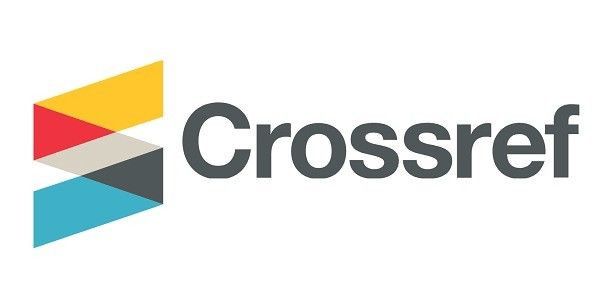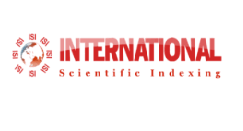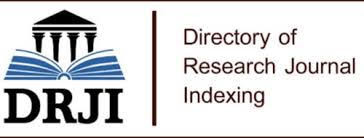Research Article
Effect of Gossypol and Carsil on the Dopamine-Prolactin System and Lipid Profile in Experimental Fatty Hepatosis
- Dr. Babajanova U.T
Corresponding author: Babajanova U.T., Alfraganus University, Department of Medicine, Tashkent, Uzbekistan.
Volume: 2
Issue: 2
Article Information
Article Type : Research Article
Citation : Mirzaeva A. Kh, Babajanova U.T. Effect of Gossypol and Carsil on the Dopamine-Prolactin System and Lipid Profile in Experimental Fatty Hepatosis. Journal of Medicine Care and Health Review 2(2). https://doi.org/10.61615/JMCHR/2025/APRIL027140422
Copyright: © 2025 Babajanova U.T. This is an open-access article distributed under the terms of the Creative Commons Attribution License, which permits unrestricted use, distribution, and reproduction in any medium, provided the original author and source are credited.
DOI: https://doi.org/10.61615/JMCHR/2025/APRIL027140422
Publication History
Received Date
31 Mar ,2025
Accepted Date
14 Apr ,2025
Published Date
22 Apr ,2025
Annotation
Fatty hepatosis is accompanied by significant changes in hormonal status, including an imbalance of prolactin, dopamine, leptin, and ghrelin. This study is aimed at studying the dynamics of these hormones in laboratory animals with experimental fatty hepatosis before and after 18 and 20 weeks of therapy with gossypol and carsil. The results demonstrate a significant improvement in hormonal levels and lipid metabolism, indicating the therapeutic potential of these drugs.
Keywords: fatty hepatosis, prolactin, dopamine, leptin, ghrelin.
►Effect of Gossypol and Carsil on the Dopamine-Prolactin System and Lipid Profile in Experimental Fatty Hepatosis
Mirzaeva A. Kh1, Babajanova U.T.1*
1Alfraganus University, Department of Medicine, Tashkent, Uzbekistan.
Introduction
Fatty hepatosis is a pathological condition characterized by excessive accumulation of lipids in hepatocytes, which leads to destabilization of cell membranes, metabolic disorders, and the development of inflammatory processes. This pathological process is accompanied by changes in the neuroendocrine regulation system, which affects the balance of key hormones, including prolactin, dopamine, leptin, and ghrelin. An imbalance of these hormones not only aggravates the course of the disease but can also contribute to its progression up to the development of non-alcoholic steatohepatitis and liver fibrosis [4]. Prolactin plays an important role in modulating immune responses, regulating metabolism, and adapting the body to stress. Its level can increase in fatty hepatosis, which is associated with impaired liver function and changes in the regulatory mechanisms of the hypothalamic-pituitary system. Hyperprolactinemia can promote the development of inflammatory reactions in the liver, increasing fibrosis processes and disrupting lipid metabolism [3].
Dopamine, on the contrary, is a critically important neurotransmitter regulating motivation, cognitive functions, and metabolic adaptation. Its decrease in fatty hepatosis can be associated with both a violation of its synthesis and a change in receptor sensitivity. The literature notes a direct link between a decrease in dopamine levels and the development of insulin resistance, which indicates its important role in the pathogenesis of metabolic disorders [2].
Leptin and Ghrelin are key regulators of appetite and energy metabolism. Leptin, produced by adipose tissue, is responsible for suppressing appetite and stimulating energy expenditure, while ghrelin, on the contrary, stimulates hunger and promotes lipid accumulation. In fatty hepatosis, there is a violation of their secretion, which leads to an imbalance in energy metabolism, increased lipogenesis, and decreased lipolysis processes. This, in turn, aggravates the metabolic state of the body and contributes to the further progression of the disease [1].
Additionally, fatty hepatosis is accompanied by a change in the lipid spectrum of the blood, including an increase in the level of triglycerides and very low-density lipoproteins, which indicates a violation of lipid metabolism and an increased risk of cardiovascular complications. Hepatocellular insufficiency developing against the background of fatty hepatosis can also lead to a change in the concentration of proteins, enzymes, and other biochemical parameters of the blood, which requires an integrated approach to diagnosis and treatment.
The aim of this study is to study the dynamics of the hormonal background and lipid spectrum of the blood in animals with experimental fatty hepatosis before and after gossypol and carsil therapy.
Materials and Methods
The study involved male Wistar laboratory rats (8 weeks old, weighing 180–200 g) kept under standard vivarium conditions with a 12-hour light/dark cycle, a temperature of 22–24 °C, and a humidity of 50–60%. The animals were divided into control and experimental groups. In the experimental group, fatty hepatosis was modeled, after which the animals were treated with gossypol or carsil for 18 and 20 weeks. Serum levels of prolactin, dopamine, leptin, and ghrelin were measured using enzyme-linked immunosorbent assay (ELISA). The lipid profile was assessed by the concentration of triglycerides and lipoproteins of different densities. Correlation analysis was performed to identify relationships between changes in hormonal levels and biochemical parameters.
Results and Discussion
Before the start of therapy, animals with fatty hepatosis showed significant deviations in the levels of the studied hormones compared to the control group (Table 1).
Table 1: Hormonal levels in hepatosis and in the control group
|
Group |
Prolactin (ng/ml) |
Dopamine (pg/ml) |
Leptin (ng/ml) |
Ghrelin (ng/ml) |
|
Control |
5.47±0.58 |
71.72±3.93 |
27.41±1.75 |
19.95±3.04 |
|
Hepatosis |
39.7±3.59 |
10.28±2.20 |
6.78±0.52 |
1.04±0.6 |
Prolactin is a hormone involved in the regulation of immune responses, stress mechanisms, and maintaining homeostasis. In the control group, the prolactin level was 5.47±0.58 ng/ml, which corresponds to physiological norms. However, in animals with fatty hepatosis, its concentration increased more than 7 times, reaching 39.7±3.59 ng/ml. Hyperprolactinemia may be associated with impaired liver function, decreased detoxification capacity, and changes in the regulation of the hypothalamic-pituitary system. Elevated prolactin levels can also increase inflammatory processes in the liver, contributing to the progression of the disease [3].
Dopamine plays a key role in the modulation of neurotransmitter processes and metabolism regulation. In the control group, its level was 71.72±3.93 pg/ml, which corresponds to the normal activity of the dopaminergic system. However, in animals with fatty hepatosis, the dopamine concentration decreased more than 7 times, reaching 10.28±2.20 pg/ml. Dopamine deficiency may be due to changes in its metabolism in the liver, decreased activity of dopaminergic receptors, and increased inflammatory processes. A decrease in dopamine levels may also be associated with the development of insulin resistance and lipid metabolism disorders [2].
Leptin is the main hormone regulating energy balance and body weight. In the control group, its level was 27.41±1.75 ng/ml, which corresponds to the normal state of lipid metabolism. However, in animals with fatty hepatosis, its concentration decreased to 6.78±0.52 ng/ml, indicating a disturbance in appetite regulation and energy metabolism. A decrease in leptin levels may be due to changes in adipose tissue metabolism, as well as a decrease in the sensitivity of leptin receptors in the hypothalamus, which contributes to the development of obesity and lipid metabolism disorders [1].
Ghrelin is a hormone that stimulates appetite and is involved in energy metabolism. In the control group, its level was 19.95±3.04 ng/ml, which corresponds to normal appetite regulation. However, in animals with fatty hepatosis, its concentration decreased to 1.04±0.6 ng/ml, indicating a disturbance in the mechanism of eating behavior regulation. A decrease in ghrelin levels may be associated with changes in the secretion of this hormone in the stomach, as well as with a disruption of its interaction with the central nervous system. This may contribute to the development of anorexia or, conversely, an increase in uncontrolled food consumption under conditions of disrupted hormonal regulation [1].
After 18 weeks of therapy with gossypol and carsil, significant changes in the levels of the hormones studied were observed in animals with experimental fatty hepatosis. These changes indicate a positive effect of the drugs on the regulation of the dopamine-prolactin system, as well as on metabolic processes associated with lipid metabolism (Table 2).
Table 2 Dynamics of hormonal parameters during 18-week therapy for hepatosis
|
Group |
Prolactin (ng/ml) |
Dopamine (pg/ml) |
Leptin (ng/ml) |
Ghrelin (ng/ml) |
|
Control |
5.47±0.58 |
71.72±3.93 |
27.41±1.75 |
19.95±3.04 |
|
Hepatosis+Gossypol |
25.95±1.37 |
27.92±0.84 |
28.35±0.59 |
2.98±0.27 |
|
Hepatosis+Carsil |
36.05±1.84 |
20.15±1.33 |
18.29±0.76 |
2.65±0.21 |
Before treatment, the prolactin level in animals with fatty hepatosis was significantly increased (39.7±3.59 ng/ml), indicating severe hyperprolactinemia. After 18 weeks of therapy, its concentration decreased in both experimental groups. In the group receiving gossypol, the prolactin level was 25.95±1.37 ng/ml, which is 35% lower than the initial value. In the group receiving carsil, the decrease in prolactin was less pronounced, reaching 36.05±1.84 ng/ml. This shows that gossypol has a more pronounced effect in reducing hyperprolactinemia.
The concentration of dopamine, which was reduced to 10.28±2.20 pg/ml before treatment, increased after 18 weeks of therapy. In the group receiving gossypol, the dopamine level was 27.92±0.84 pg/ml, which means more than a two-fold increase. In the group receiving carsil, a less pronounced increase was observed - 20.15 ± 1.33 pg/ml. An increase in dopamine levels indicates the restoration of the dopaminergic system, which can contribute to the improvement of cognitive functions and a decrease in metabolic disorders [2].
Before treatment, the leptin level in animals with fatty hepatosis was reduced (6.78 ± 0.52 ng/ml), indicating a violation of the regulation of energy metabolism. After 18 weeks of therapy in the group receiving gossypol, its concentration increased and amounted to 28.35 ± 0.59 ng/ml, which even exceeds the control group. In the group receiving carsil, the leptin level also increased, but less significantly - 18.29 ± 0.76 ng/ml. This indicates the restoration of the sensitivity of leptin receptors and the normalization of lipid metabolism.
Ghrelin, which was significantly reduced before treatment (1.04±0.6 ng/ml), increased after 18 weeks of therapy but did not reach the level of the control group. In the group receiving gossypol, its concentration was 2.98±0.27 ng/ml, and in the group with carsil - 2.65±0.21 ng/ml. This may indicate a gradual restoration of the mechanisms regulating appetite and energy metabolism [1].
After a 20-week course of treatment with gossypol and carsil, even more pronounced positive changes in the hormonal status were observed in animals with experimental fatty hepatosis. Compared with the results of the 18th week, the therapy continued to affect the dopamine-prolactin system, as well as the indices associated with lipid metabolism and regulation of energy balance (Table 3).
Table 3: Effect of gossypol and carsil on hormone levels in hepatosis
|
Group |
Prolactin (ng/ml) |
Dopamine (pg/ml) |
Leptin (ng/ml) |
Ghrelin (ng/ml) |
|
Control |
5.47±0.58 |
71.72±3.93 |
27.41±1.75 |
19.95±3.04 |
|
Hepatosis+Gossypol |
9.84±0.47 |
52.6±2.38 |
30.86±1.43 |
6.57±0.91 |
|
Hepatosis+Carsil |
22.67±2.36 |
34.87±2.18 |
23.14±0.86 |
4.3±0.15 |
After 20 weeks of therapy, prolactin levels continued to decrease, reaching 9.84±0.47 ng/ml in the gossypol group and 22.67±2.36 ng/ml in the carsil group. This decrease was especially noticeable in the gossypol group, where prolactin levels approached the control values (5.47±0.58 ng/ml). This effect may indicate profound changes in the regulation of the hypothalamic-pituitary system and the restoration of the mechanisms controlling prolactin secretion [3].
Dopamine concentrations continued to increase, demonstrating clear positive dynamics. In the group receiving gossypol, the dopamine level was 52.6±2.38 pg/ml, which is more than five times higher than the initial values (10.28±2.20 pg/ml) and significantly closer to the control level (71.72±3.93 pg/ml). In the group receiving carsil, an improvement was also observed, although its level remained lower - 34.87±2.18 pg/ml. The restoration of dopamine levels can be associated with the improvement of neurotransmitter processes, a decrease in inflammatory reactions, and the normalization of metabolism [2]. After 20 weeks of therapy, the leptin level in the gossypol group continued to increase and reached 30.86±1.43 ng/ml, which even exceeds the control group (27.41±1.75 ng/ml). This indicates the restoration of lipid metabolism regulation and leptin receptor sensitivity, which may contribute to the improvement of metabolic processes. In the group receiving carsil, leptin also increased, but it was less pronounced (23.14±0.86 ng/ml), indicating a gradual restoration of regulatory mechanisms.
The concentration of ghrelin, which was significantly reduced before treatment (1.04±0.6 ng/ml), continued to increase after 20 weeks of therapy. In the group receiving gossypol, its level was 6.57±0.91 ng/ml, and in the group receiving carsil, it reached 4.3±0.15 ng/ml. This indicates further restoration of the mechanisms regulating appetite and energy balance. Although the ghrelin level still remained below the control value (19.95±3.04 ng/ml), its growth indicates a gradual normalization of endocrine regulation [1].
After 18 weeks of therapy, the prolactin level had already significantly decreased, but by the 20th week, its concentration continued to decrease. A particularly pronounced effect was observed in the group receiving gossypol, where the prolactin level became almost 4 times lower compared to the initial values. In the carsil group, a decrease was also noted, but it was less pronounced. These data indicate a continuing restoration of the regulation of prolactin secretion.
Dopamine demonstrated positive dynamics throughout the entire period of therapy. In the gossypol group, its level approached the control values, which indicates the restoration of neurotransmitter processes. In the carsil group, an increase was also observed, but its indicators remained lower than in the gossypol group. These changes may indicate a gradual restoration of dopaminergic regulation and improvement of metabolic processes.
Leptin concentration continued to increase, especially in the gossypol group. This may indicate the restoration of lipid metabolism regulation and improvement of metabolic adaptation. In the carsil group, growth was also observed, but its rate was less pronounced. The restoration of leptin levels plays an important role in regulating energy metabolism and reducing the risk of further progression of fatty hepatosis.
Ghrelin, which was significantly reduced before treatment, continued to increase, although its level remained below control values. This indicates a slow but steady restoration of appetite regulation mechanisms. In the gossypol group, ghrelin growth was more pronounced, which may indicate a gradual restoration of receptor sensitivity and normalization of the secretion of this hormone.
Thus, 20-week therapy allowed to achieve more significant changes compared to 18-week therapy, especially in the gossypol group, which confirms its high efficiency in normalizing hormonal balance.
Conclusion
The obtained data confirm that fatty hepatosis is accompanied by pronounced endocrine changes, including hyperprolactinemia, decreased dopamine, and lipid metabolism disorders. Therapy with gossypol and carsil has a positive effect on the dopamine-prolactin system and metabolic parameters.
The most pronounced effect was observed with gossypol, which makes it a promising agent for correcting hormonal imbalance and improving liver function.
Liver damage is accompanied by pronounced changes in the hormonal status of patients, including an imbalance of prolactin, dopamine, leptin, and ghrelin. In this study, a comparative analysis of the dynamics of these hormones before and after 18 and 20 weeks of therapy using gossypol and carsil is carried out. The obtained results demonstrate a significant improvement in the indicators during treatment, which indicates the effectiveness of the proposed therapeutic strategies.
- Cummings, D. E, Purnell, J. Q, Frayo, R. S. (2001). A preprandial rise in plasma ghrelin levels suggests a role in meal initiation in humans. Diabetes. 50(8): 1714-1719.
- Forbes, S, Doherty, G. H, Lillycrop, K. A. (2013). Epigenetic mechanisms regulate the dopamine system in response to metabolic syndrome. Molecular Psychiatry. 18(6): 674-683.
- Sanyal, A. J, Campbell-Sargent, C, Mirshahi, F. (2001). Nonalcoholic steatohepatitis: Association of insulin resistance and mitochondrial abnormalities. Gastroenterology. 120(5): 1183-1192.
- Smith, R. G, Jiang, H, Sun, Y. (2005). Developments in ghrelin biology and potential clinical relevance. Trends in Endocrinology & Metabolism. 16(9): 436-442.
Download Provisional PDF Here
PDF




p (1).png)




.png)




.png)
